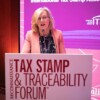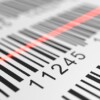
ITSA Calls for Tax Stamp Clarity
23 Apr 2021 | Press Releases
The International Tax Stamp Association (ITSA) is urging greater clarity around the definition of the tax stamps used to secure excise revenues from tobacco and alcohol products.
The move comes in the wake of the continued misuse of the term ‘tax stamp’ by some sector solution providers, which is raising issues around specification and seem to contravene international standards.
ITSA says there is a lot of confusion over specific terms, notably the difference between tax stamps and the security feature labels used by some member states under the EU Tobacco Products Directive (TPD).
The fundamental differences between tax stamps and secure labels pertain to functionality and the specifier/issuer. Stamps fundamentally serve a tax purpose and may fulfil other functions, such as those related to authentication, while secure labels should just be used for authentication purposes.
Tax stamps play an important role in securing revenues as international supply chains continue to be threatened by counterfeiters and smugglers look to take advantage of the pandemic to trade in illicit tobacco.
Latest figures indicate that the trade in fake tobacco is worth upwards of $50 billion annually worldwide, according to a 2020 World Bank report* and accounts for approximately 600 billion illicit cigarettes per year.
ITSA’s call comes as most EU member states use tax stamps to comply with the TPD’s security feature requirements, while in five other states plus the UK, which do not use tax stamps, the tobacco industry has opted for secure labels to ensure conformance with the TPD.
Moreover, individual tobacco manufacturers contract directly with various printers for the provision of these labels rather than going through the national tax or other government authorities.
The current situation is further exacerbated by the misuse of terminology in other parts of the world. In India, for instance, there are reports that state excise departments use the terms ‘excise adhesive label’ and ‘security hologram’ to refer to the same thing, which is adding to the confusion and highlighting the need for strong action around definitions, ITSA said.
Juan Carlos Yañez, chair of ITSA, said confusion reigns where there needs to be clarity: “The need for tax stamp programmes has never been more timely as we see government revenues plummet, deficits rise, and debt levels swell to eye-watering proportions in the face of the Covid pandemic.
“So the differences between tax stamps and non-tax related secure labels must be clear and unequivocal to remove the doubts. Yet, some sector solution providers continue to describe non-tax labels as tax stamps when they are clearly not.
“Moreover, the use of the wrong terminology may contravene international standards and water down stringent recommendations of standards, notably ISO 22383:2020 covering Guidelines for the selection and performance evaluation of authentication solutions for material goods, and ISO 22382:2018 covering Guidelines for the content, security, issuance and examination of excise tax stamps.”
A tax stamp is defined by ISO 22382 as a ‘visible stamp, label or mark placed on certain types of consumer goods to show that the applicable excise tax has been paid’. This identifies the key and unique function of a tax stamp, which is to show that the required tax on the item that the stamp is affixed to has been paid – the stamp acts as a receipt. It also recognises that stamps may have other functions including those relating to legislative compliance such as complying with the security feature provisions of the EU TPD.
There is another feature of tax stamps which is that they are specified and issued under the authority of the appropriate tax authority, defined in ISO 22382 as: ‘a government (national, provincial, state or local) agency that has responsibility for the collection of applicable taxes and for the specification and design of tax stamps’.
Secure labels are normally specified and issued by the brand owner while tax stamps are state organisation issued. The TPD is the exception to this in that it requires authentication labels to conform to an agreed national design and security specifications, with at least one security element on the label issued by an authorised and independent third party.
Juan Carlos Yañez added: “Tax stamp and traceability programmes help governments protect and recoup much-needed revenues as they battle to secure excise and get their public finances back on track. So the bottom line as far as the difference between a tax stamp and secure label is concerned in this battle is that the latter doesn’t provide proof of tax paid while the former does.”
Tax stamps can be an integral element of track and trace programmes and best practice within the sector, effectively monitoring the location and movement of goods throughout the supply chain from manufacture to point-of-sale. A secure track and trace programme works by assigning a unique individual identity to each item – a pack of cigarettes or a bottle of alcohol, for example – during the manufacturing process.
Once assigned, the identity is stored in a secure database and updated every time there is a significant event, such as a change of ownership or payment of tax due, and supports authentication throughout the supply chain. This produces a comprehensive product history; it means that if the pack or bottle is found in a place or state that is irregular, its provenance can be fully traced back and the responsible party held accountable.
The digital traceability features of tax stamps, combined with their material security features and tamperproof functionality, are the most robust means to ensure tax compliance, audit optimisation and product protection. Considering the highly detrimental and pervasive nature of the illicit trade of excisable products, great ills require great remedies.








